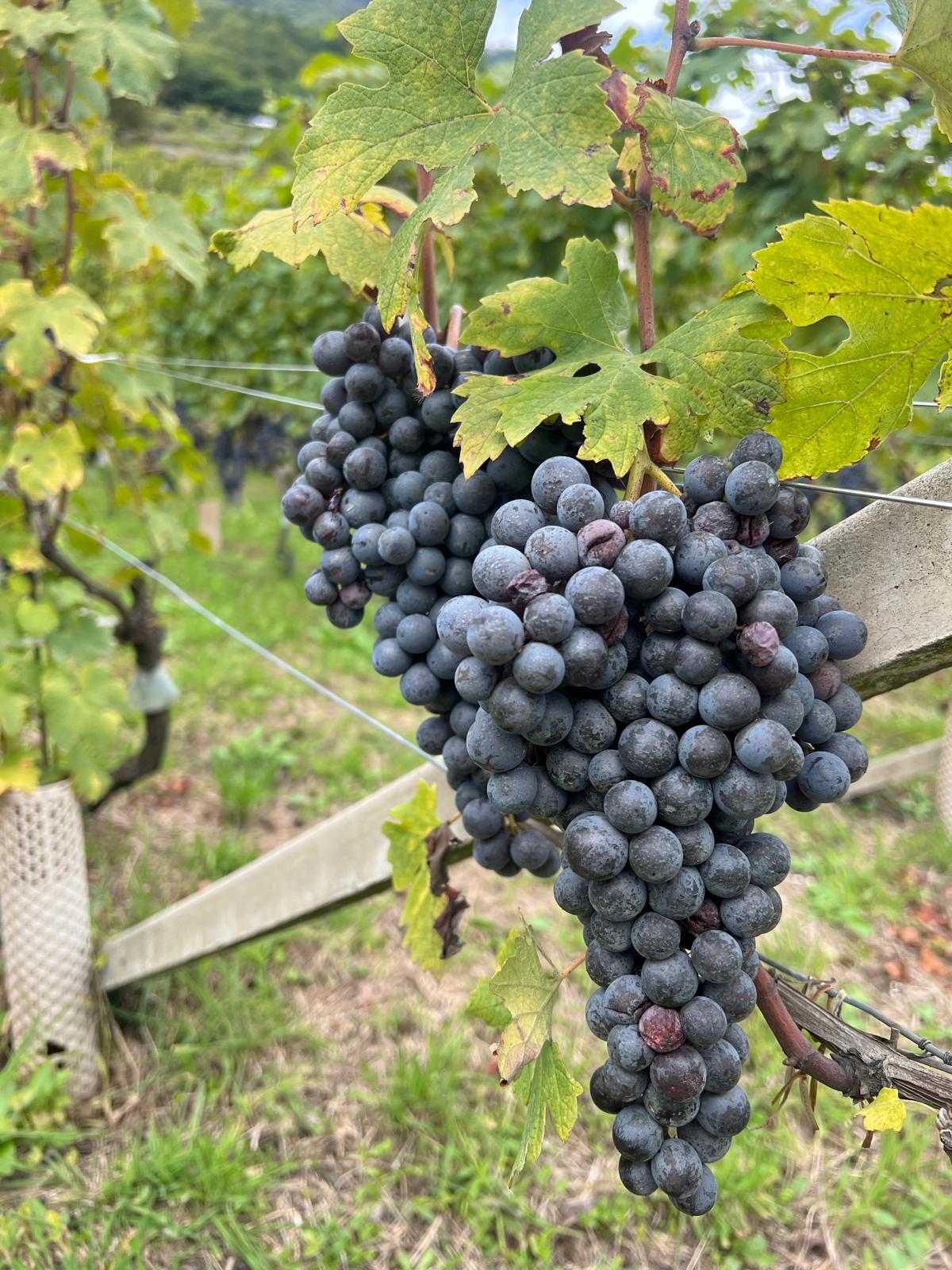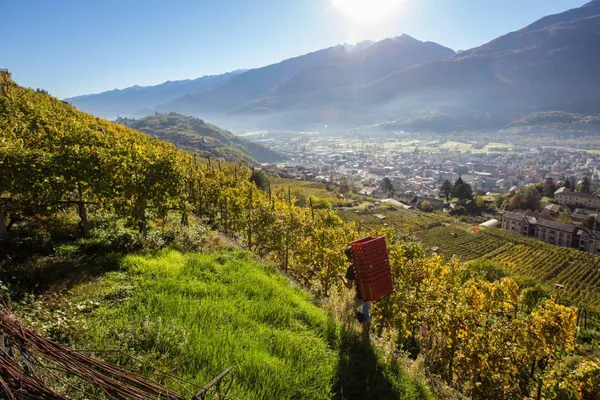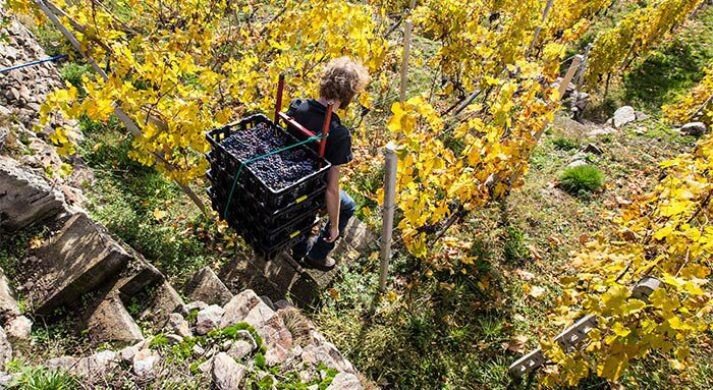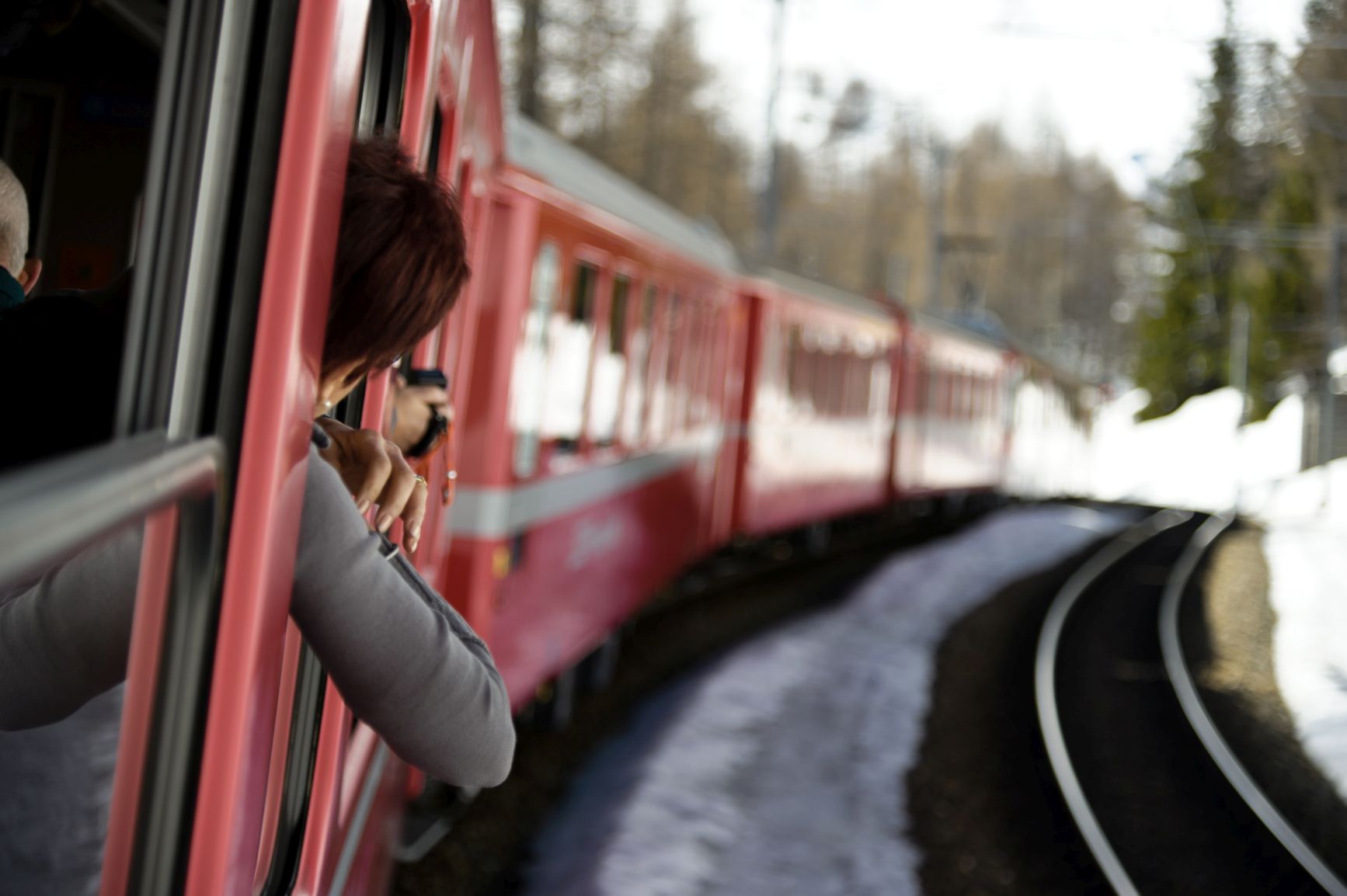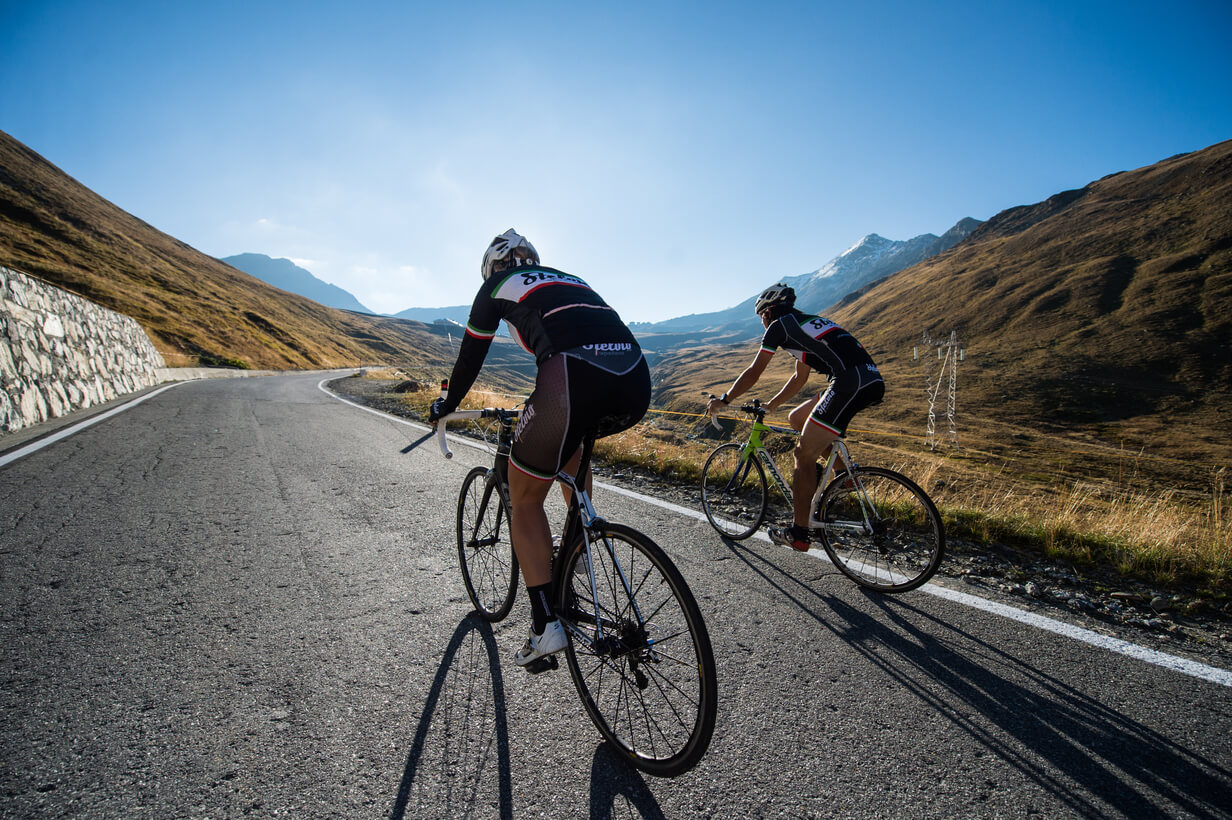Visit to the Dirupi wine cellar
October 6, 2024
At this time, when the hotel is closed, we take the opportunity to get to know our suppliers better. It only takes a 30-minute drive to find ourselves in a completely different environment. From the coniferous forest of Bormio at 1,200 meters, we descend to where olive trees are now also growing! Stefano, a philosopher from Sondrio and viticulture enthusiast since his university days, is our guide. We are lucky: the grape harvest starts right now and all around us there is a bustle of people busy harvesting.
Let’s start with the basics. What makes Valtellina wines and Nebbiolo so special?
.
Several factors contribute to the uniqueness of Nebbiolo. Nebbiolo in Valtellina can be considered a native grape, the result of long geographic isolation and centuries of adaptation to the mountains. It is a rare grape variety that grows only here and in Piedmont, with some exports to Australia and California. Second, the climate is particularly favorable. The Valtellina extends in an east-west direction, and the Rhaetian slope offers ideal exposure for sunlight. The valley is protected from cold north winds by the peaks of the Rhaetian slope, which reach 4,000 meters in some places. The proximity to Lake Como creates a microclimate characterized by constant temperatures and regular wind, called breva. The soils are poor and have been wrested from the mountains over the centuries by the construction of dry stone walls that characterize the Valtellina landscape and are now considered an intangible heritage of humanity. Farming here means facing the challenge of almost exclusively manual labor. Winemakers climb narrow terraces connected by stone ladders, without the possibility of using tractors or heavy machinery.
..
One last curiosity related to the names of your wines! Why is your Sforzato called Vino Sbagliato (wrong wine)?
..
You do know how Sforzato is produced, don’t you? The specifications are very strict both regarding the growing areas and the production process. The best bunches of Nebbiolo grapes are placed in traditional fruit lofts, where the slow drying phase begins, a natural dehydration of the grapes that must last until at least early December. From December 1, the grapes can be pressed and fermented in steel, with a 20-day maceration. It then matures for 12 months in barrique and another 12 months in bottle. It is excellent to drink immediately, but can be cellared for up to 10 years. Dirupi’s Sbagliato Sforzato di Valtellina DOCG was born after several years of trial and error, hence the name.
